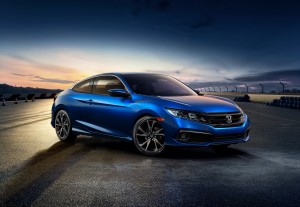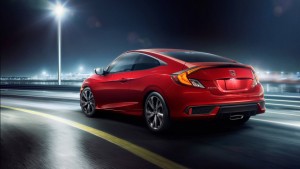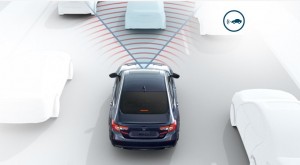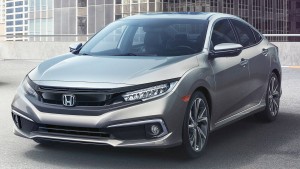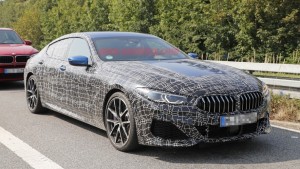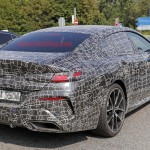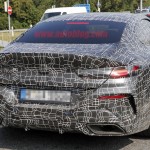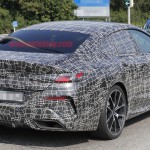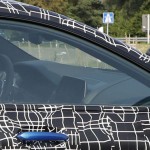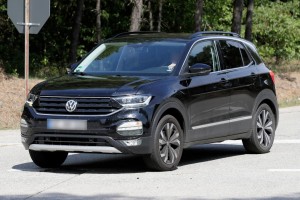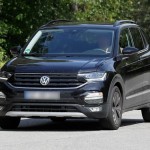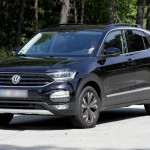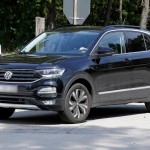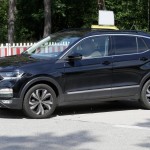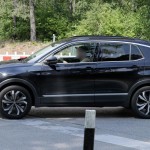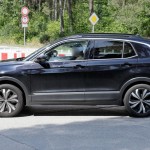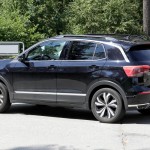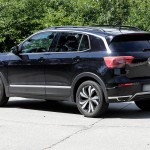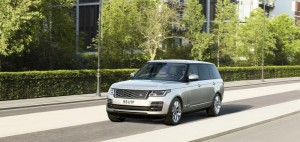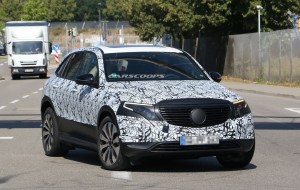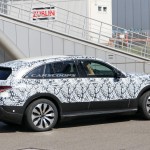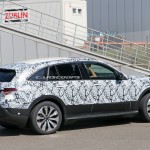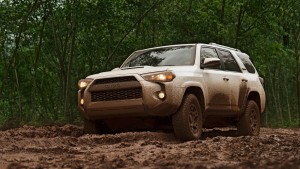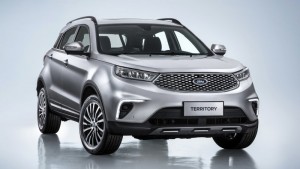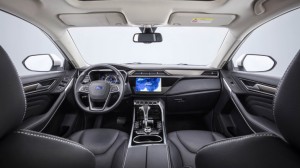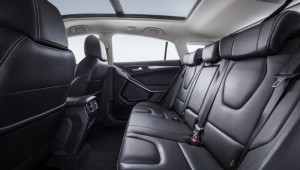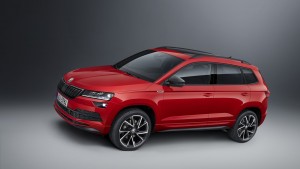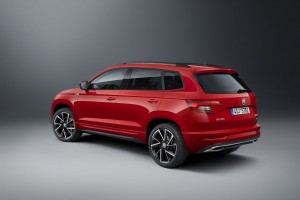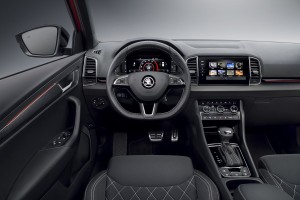Monthly Archives: August 2018
2019 Ford Ranger Pickup Starts At $25,395
Following a configuration tool leak last week, Ford officially announced pricing for its 2019 Ford Ranger. The base price is priced a little higher at $25,395 compared to the leak, but it’s just a $300 difference so that should not cause a problem.
The official report from Ford revealed that there would be no regular-cab model available, which may disappoint some customers who are fans of simple trucks. Then again, the Chevy Colorado, the GMC Canyon, the Nissan Frontier, and the Toyota Tacoma are not available with a regular cab either. This decision should not come as a surprise for Ford fans.
The $25,395 price tag was for the entry-level XL with an extended cab and two-wheel drive. The old price is still available, but you will have to get the chassis cab version of the XL SuperCab, which no regular customer would be looking for. The higher trim levels, of course, are priced higher but you’ll get a lot more gorgeous specs and tech features.
Here are all the prices of the trim levels, including the destination charge: $25,395 (XL SuperCab 2WD), $29,555 (XL SuperCab 4WD), $27,615 (XL SuperCrew 2WD), $31,775 (XL SuperCrew 4WD), $29,035 (XLT SuperCab 2WD), $33,035 (XLT SuperCab 4WD), $31,210 (XLT SuperCrew 2WD), $35,210 (XLT SuperCrew 4WD), $33,305 (Lariat SuperCab 2WD), $37,305 (Lariat SuperCab 4WD), $35,480 (Lariat SuperCrew 2WD), and $39,480 (Lariat SuperCrew 4WD).
Among the current crop of small pickup trucks, the Ranger has the highest base price. The Nissan Frontier starts at $19,965, the Colorado at $21,590, the Canyon at $22,095, and the Tacoma at $24,740. All of these come with naturally aspirated four-cylinder engines. The Ranger’s base model comes with a turbocharged 2.3-liter four-cylinder, which is the same one in the EcoBoost Mustang and the Focus RS.
For the V6 models, the Ranger is only beaten by the Colorado at $25,345. The Frontier starts at $26,195, the Canyon at $27,630, and the Tacoma at $31,365.
Honda Civic Gets Refreshed For 2019 Model Year
For the first time since it was launched in 2015, the Honda Civic is receiving a refresh for the 2019 model year. Aside from an updated design, the Civic is also getting a new Sport trim and Honda Sensing on all trim levels.
Design
Nothing much has changed in terms of design but when you look at it closely, you’ll notice the subtle yet elegant changes Honda made. The upper front fascia wing is painted in black and the layout of the lower fascia is different—the vents are now integrated into a single unit rather than three sections. Other updates on the design are a full-width front splitter, chrome side pod accents, updated halogen or LED headlights, new wheel designs, and a chrome accent on the rear bumper of the sedan.
Sport trim
The Japanese automaker is introducing the new Sport trim for the 2019 Civic. This trim is rather unique and can stand on its own. It has piano black accents on the lower front fascia and black 18-inch wheels. The sedan gets an additional rear decklid spoiler, too.
Inside, the Sport trim has an updated 7-inch infotainment screen and a volume knob that replaces the interesting sliding mechanism on previous models.
The Sport trim should be affordable since it is being placed between the LX and the EX. It has not announced the price list yet, but the 2018 prices range between $19,835 and $22,235 for the LX and EX sedans and between $20,245 and $22,695 for the LX and EX-T coupes.
For its engine, the Sport trim will get the base 2.0-liter naturally aspirated four-cylinder engine that can be paired with either a six-speed manual or a CVT.
Honda Sensing
The Japanese automaker is bringing its driver assistance technology package to all trim levels of the Civic sedan and coupe. The package includes a collision mitigation braking system with forward collision warning, road departure mitigation with lane departure warning, lane keeping assist, and adaptive cruise control.
4 Things We Learned About The 2020 BMW 8-Series Gran Coupe
After we have spotted prototypes for the BMW 8-Series Convertible, we are now being treated to some spy shots of the 8-Series Gran Coupe. By the looks of it, the Gran Coupe is more likely to be a sedan than an actual coupe. This model is due to fill the gaps that the 6-Series Gran Coupe will leave after it gets phased out by the German automaker.
Exterior
We know a little bit about how this car will look, thanks to the M8 Gran Coupe concept unveiled in March. We can also expect an M8 version to be launched with the regular one. Just like the 8-Series coupe, the Gran Coupe will have a low roof and wide, muscular shoulders, which may mean an option for a three-seat bench in the rear.
Interior
We expect nothing less from BMW when it comes to cabin elegance and luxury. The digital screens serve as instrument cluster and the entertainment hub. Right smack on the center console would be a gear lever and a rotary-dial controller. There will be plenty of technology, of course, but the German brand hasn’t let us on it yet. If you want to know what to expect from the Gran Coupe’s cabin, take a look at the previously revealed 2019 M850i xDrive coupe’s interior.
Platform
BMW will use the CLAR modular platform that started with the 2016 7-Series. The multi-material design of the platform is meant to shed weight, but the Gran Coupe might still be a tad heavy compared to others. The coupe weighs 4,478 pounds in the M850i disguise, so the Gran Coupe will likely be heavier. This CLAR platform will also make the car compatible with electric powertrains.
Engines
We have no details on the engines that would be offered but expect the same 4.4-liter twin-turbocharged V8 found in the M850i coupe. That one makes 523 horsepower. There might also be an option for a 3.0-liter turbocharged inline-6 and the M8 will get M850i’s V8 engine with over 600 horsepower. We also expect that a plug-in hybrid will be introduced.
Check out the new spy shots of the upcoming BMW 8-Series Gran Coupe in the gallery below:
Range Rover Sport P400E Plug-In Hybrid Can Go 31 Miles Using Electricity
Even Land Rover is going hybrid now. The British automaker just revealed the 2019 Range Rover Sport Plug-in Hybrid that can go 31 miles on electric power alone.
JLR is responsible for producing the hybrid system that can power the heaviest Range Rover vehicle. It carries the same engine found in the Jaguar F-Type, which is based on a 2.0-liter turbocharged unit with an output of 296 hp. The engine is assisted by a powerful 141 hp electric motor that receives power from its 13.1 kWh battery.
The hybrid system produces 398 hp and 472 lb-ft of torque that allows the Range Rover to go from 0 to 60 mph in mere 6.3 seconds. That is 0.1 second quicker compared with the Range Rover P400e.
However, what we’re actually looking for is just how many miles can the P400e go without using gasoline, which is 31 miles on electric power with a fully-charged 13.1 kWh battery. It takes only 2 hours and 45 minutes to fully charge the SUV’s battery using a 220V/32 Amp charger.
Even if the power is only coming from its electric source, the Range Rover Sport P400e plug-in hybrid can handle serious off-road situations. The auto receives the same off-road gear as the other Range Rover Sport models.
The new feature for the 2019 model includes the wade sensing feature, which can detect the depth of water and can assess if the Range Rover is moving deeper or shallower into the water. It notifies the driver if the car is getting too deep. The system is also available across all other 2019 Range Rover Sport models.
2020 Mercedes-Benz EQ C Electric Crossover Is Nearly Production-Ready
Mercedes-Benz has been very open about its plans to produce an electric vehicle and we might be seeing that in the upcoming EQ C electric crossover SUV. Spy photos showed that the electric crossover SUV has a glitzy concept, thanks in part to the interesting front fascia.
Until now, we haven’t seen a clear picture of the vehicle, but the latest spy shots showed the crossover SUV with less camouflage and body-hugging vinyl wrap.
The most interesting part about the vehicle is the front fascia, which is very different from the current styling that Mercedes-Benz does on its SUVs. The grille is upswept, unlike the frown-like shape of other recent Mercedes cars. The grille also extends all the way to the headlights, eliminating the need for a body-color section between them.
Speaking of the headlights, they are now reshaped and starts thin at the edges and sweeps downward toward the inside. It looks like the body panel will wrap around the bottom of the grille and will match the unique shape of the headlights. They will come with a contrasting color, possibly black, to put a rather unique spin to the car.
Interestingly, these are the same details shown during the unveiling of the car’s concept in 2016.
The rest of the EQ C electric crossover looks conventional and traditional. It has a profile that speaks of an internal-combustion, rear-drive car with a long nose and plenty of space between the front axle and the A-pillar. The lines on the car are smooth and curvy while the windows and the taillights would not be out of place on any other Mercedes vehicles.
The back end is quite rounded, though, almost looking like a bulbous Land Rover Velar tail. Capping the exterior design is the wheels, the design of which is based on the 2016 concept (but this one is simpler).
Inside, you’ll find the cabin wrapped in premium materials with elegance written all over it. The interior has giant dual screens for instruments and infotainment.
The Mercedes-Benz EQ C is scheduled to be on sale in 2020. Details about the powertrains remain vague for now, but it looks like it would have dual motors that produce 402 horsepower from all four wheels.
Does The 2019 Toyota 4Runner TRD Pro Deserve The $3,340 Price Bump?
Since Japanese automaker, Toyota, just upgraded its 2019 TRD Pro family, we’re all expecting for quite a bump in the price tag. Still, we are shocked to see that the increase was a whopping $3,340 over the $44,120 being collected from the 2018 model year Toyota 4Runner TRD Pro.
The price jumped to $47,460 for the 2019 edition (both the 2018 and 2019 prices include the destination charge), but the increase is a good indication of what new features we will find in the 2019 Toyota 4Runner TRD Pro. They are great, by the way. All the other trims in the lineup will get their prices bumper by $100, Toyota itself confirmed.
What we are getting for all that extra moolah are these: a completely reworked suspension in the TRD Pro lineup, a set of matte black 17-inch alloy wheels, an upgraded skid plate, and beefy Nitto tires that will help complete the overall look and performance of the new TRD Pro.
Let’s back up and take a closer look at the reworked suspension Toyota is proud of. Gone are the Bilstein units and in its place is a Fox suspension that comes with 2.5-inch internal bypass shocks paired with TRD front springs up front. At the back, the setup is similar with 2.0-inch reservoirs and loads of damping.
The 2019 model year TRD Pro can be had in three colors: the Super White, the Midnight Black Metallic, and the Voodoo Blue. The last one is only available for the TRD Pro version.
The price increase should not put buyers of the 4Runner TRD Pro off. They know that in order to make this truck as gorgeous and powerful as they need it to be, they would have to spend a few more thousand bucks. The price bump should not hurt Toyota’s sales in any way.
Everything We Know About The 2019 Ford Territory That’s Made For China
Ford is finding it difficult to infiltrate the Chinese market, and for an automaker, that’s bad news. China has become the biggest market for automakers, and without a clear presence there, the business could suffer. For this year, Ford has prepared a grand plan to capture the Chinese market. They will introduce 50 new models until 2025, starting off with an affordable crossover SUV since we can’t seem to get enough of them.
Called Ford Territory, this is no way the same as the one in Australia with the same name. While that one is based on the Ford Falcon, the Chinese-market crossover SUV is very different and will be developed with Chinese automaker JMC.
No mechanical details have been revealed yet, except that it will be offered with three engine options: a conventional gas-powered engine, a Miller-cycle-style engine with a 48V mild-hybrid assist, and a plug-in hybrid.
Don’t worry if this will be manufactured with a Chinese automaker partner. It would still very much look like a Ford since it will still be the one responsible for the Territory’s overall design, engineering, and testing. JMC will provide advice and feedback on what sells in the Chinese market. The car will also be built in a JMC factory.
Other reports from China, however, noted that the Territory may be similar to one of JMC’s brands, the Yusheng. The S330 model, however, features a turbocharged 1.5-liter four-cylinder engine that can make 163 horsepower.
From initial reports, the Territory looks handsome enough to have a shot at the Asian market. It may not be outstanding, but its exterior and interior are both aimed at functionality and at appealing to other Asian cities.
The Territory will go on sale in China early next year, but it won’t probably be available in the US because it wasn’t manufactured to meet North America’s safety and emission standards.
2019 Skoda Karoq Sportline To Be Unveiled At The Paris Motor Show
Days after Skoda introduced us to the exceptional-looking Karoq Scout, we are not again being treated to the all-new version of the Karoq Sportline. The Czech company’s sporty interpretation of the compact SUV leaves us wondering what more can Skoda do in the future.
The crossover SUV is scheduled to be presented at the Paris Motor Show in October and it will come with the most powerful engine from the range.
In total, there are four engine options to choose from: the 2.0 TSI petrol engine, two 2.0 TDI diesel engines, and the 1.5 TSI petrol engine. The 2.0 TSI petrol engine can make 190 horsepower. This is the main engine being offered by Skoda for the Karoq Sportline. There are two 2.0 TDI engines, the most powerful of which can also produce 190 horses. Using this drivetrain, the Sportline can pair well enough with a seven-speed DSG and four-wheel-drive.
The other 2.0 TDI uses a front-wheel-drive system and can only produce 150 horsepower. It comes with a manual six-speed gearbox. Options available a four-wheel-drive system combined with a seven-speed DSG.
The 1.5 TSI petrol engine comes with a front-wheel drive with the seven-speed DSG as an option. This is also paired with an all-wheel drive.
In terms of exterior, the Karoq Sportline has sportier bumpers, 19-inch black wheels, front mudguards with the Sportline logo, and black roof rails. Inside, the sports seats are all in black with contrasting silver stitch. They are upholstered in air-permeable Thermoflux fabric, which brings extra comfort to passengers, especially during the summer season.
The multifunction steering wheel is covered in perforated black leather with silver stitching, similar to the sports seats. Completing the interior styling are pedals with stainless steel elements, a black headliner, black roof pillars, and an LED package that includes ambient lighting.


